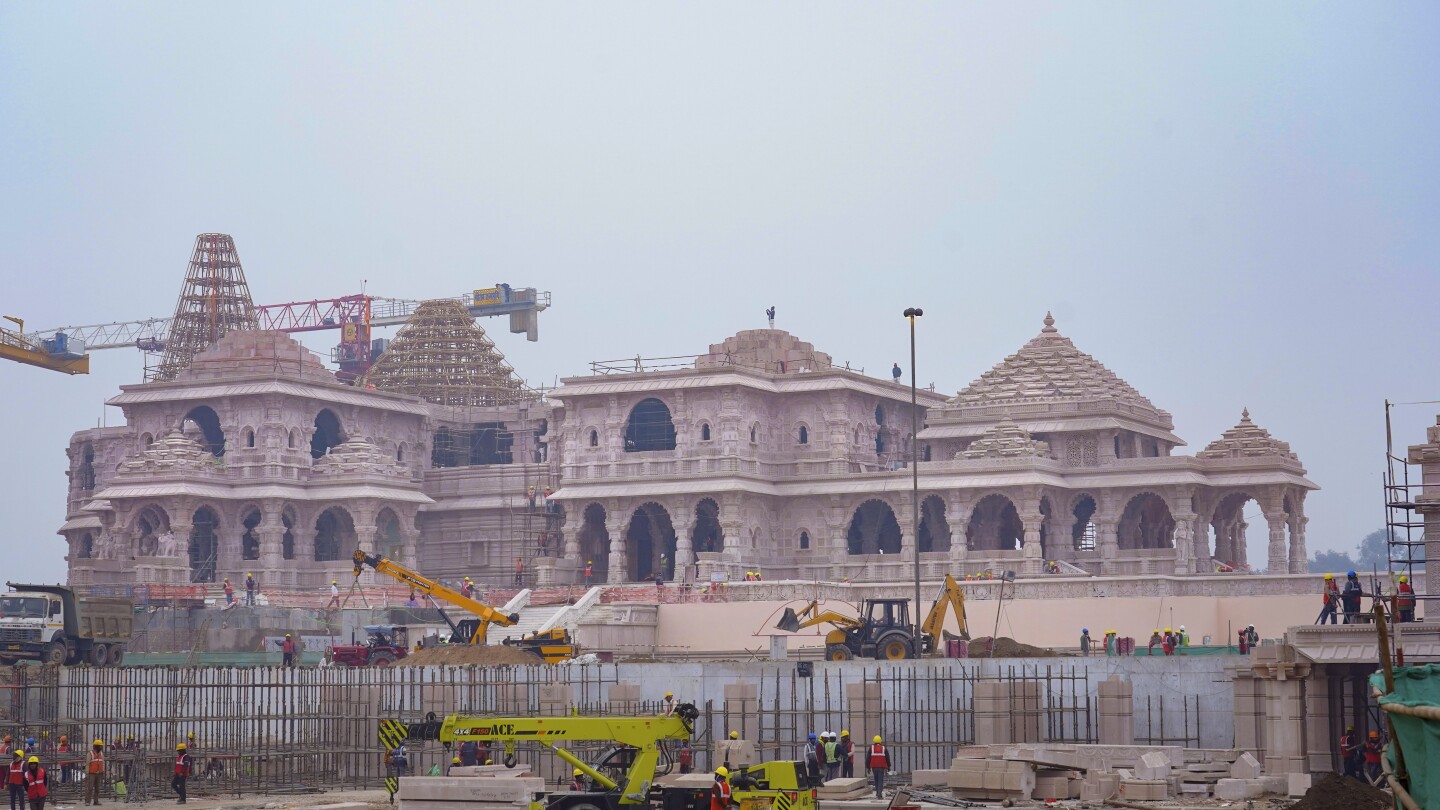Three decades after Hindu mobs tore down a historical mosque, Indian Prime Minister Narendra Modi will attend the consecration of a grand Hindu temple at the same site on Monday in a political move to boost his party ahead of a crucial national vote.
Experts say the temple, dedicated to Hinduism’s most revered deity Lord Ram, will cement Modi’s legacy — enduring but also contentious — as one of India’s most consequential leaders, who has sought to transform the country from a secular democracy into an avowedly Hindu nation.
“Right from the beginning, Modi was driven by marking his permanency in history. He has ensured this with the Ram Temple,” said Nilanjan Mukhopadhyay, an expert in Hindu nationalism and author of a book on Modi.
Many see the temple’s opening as the beginning of the election campaign for Modi, an avowed nationalist who has been widely accused of espousing Hindu supremacy in an officially secular India. Modi’s Hindu nationalist party is expected to once again exploit religion for political gain in the upcoming national elections in April or May and secure power for a third consecutive term.



A correction is required for the unaware. The mosque was built on an ancient temple.
Islam often uses older religious churches/temples for new mosques.
Hagia Sophia In Istanbul is a great example.
_ Hagia Sophia (lit. ‘Holy Wisdom’; Turkish: Ayasofya; Greek: Ἁγία Σοφία, romanized: Hagía Sofía; Latin: Sancta Sapientia), officially the Hagia Sophia Grand Mosque (Turkish: Ayasofya-i Kebir Cami-i Şerifi),[3] is a mosque and a major cultural and historical site in Istanbul, Turkey. The last of three church buildings to be successively erected on the site by the Eastern Roman Empire, it was completed in 537 AD. The site was an Eastern Orthodox church from 360 AD to 1204, when it was converted to a Catholic church following the Fourth Crusade.[4] It was reclaimed in 1261 and remained Eastern Orthodox until the Ottoman conquest of Constantinople in 1453. It served as a mosque until 1935, when it became a museum. In 2020, the site once again became a mosque._
All religions use old holy sites for new places of worship. It is a pretty standard way of reducing the tension around displacing a religion. At the same time marking it easier to get people to convert. They can worship at the same place or on the same day. The only thing that has changed is the name of the god.
To say one or another religion does this more is just not true
In case of Hagia Sophia, the structure was kept more or less the same, with some features added to make it a mosque. Mosque that was built at the place article is talking about completely razed previous structure (verified by archaeological survey of India) that was built at believed birthplace for one of the more prominent deity and a new mosque was later torn down by crowds in 1992.
Supreme court in India around 2019 decided that since this site holds a lot more significance for one religion than other (no real religion wide belief for location) the land in question would be allocated to Hindus while another location would be allocated to Muslims to reconstruct the mosque.
https://en.m.wikipedia.org/wiki/Demolition_of_the_Babri_Masjid https://en.m.wikipedia.org/wiki/Ram_Mandir
Not claiming anything about Modi, just trying to present unbiased facts.
My favorite is https://en.m.wikipedia.org/wiki/Umayyad_Mosque. It’s been a holy place under various religions since the Iron Age.